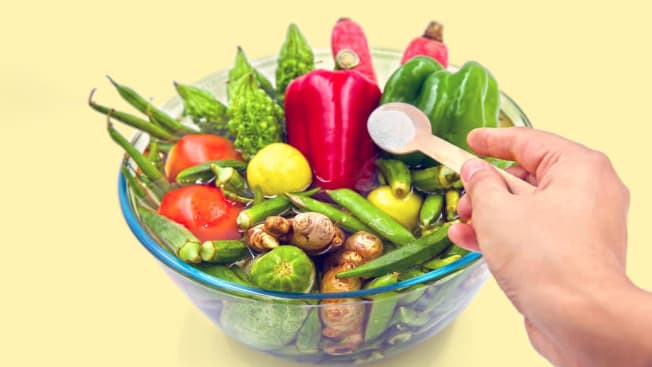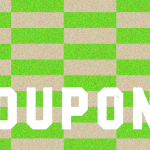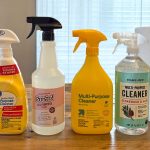
By Pang-Chieh Ho
We posted a TikTok video that talked about the best way to wash produce. Our recommendation was to wash your fruits and vegetables under running water and never use soap and bleach.
A few viewers had questions for us: What about soaking produce in distilled white vinegar? Or does dousing it in baking soda help?
Both are really good questions, though they did come as a surprise to me. That’s not to say either practice is entirely unheard of. In an Instagram poll, 13.5 percent of participants said they wash their produce with vinegar. And in a separate poll on Twitter, 10 percent said they use baking soda.
So does either actually work to get your produce cleaner? Here’s what we say.
The Benefits of Vinegar
If you want to remove bacteria, there’s research that shows that soaking greens in vinegar or a vinegar-water solution can reduce bacteria levels, though it won’t kill all bacteria.
You can soak your greens in distilled white vinegar for 10 to 15 minutes, then follow that with a good rinse, says James E. Rogers, PhD, director of food safety research and testing at Consumer Reports. You can also check out our other tips on the safest ways to eat salad.
The Benefits of Baking Soda
Soaking in baking soda and water can be an effective way of removing some pesticides. A 2017 study found that submerging apples in a baking soda solution for 2 minutes removed more pesticides than a 2-minute soak in a bleach solution or a rinse under running tap water.
However, it took 12 to 15 minutes of soaking in the baking soda solution to completely get rid of the pesticides used in this study.
It’s worth noting that the study looked at only two pesticides rather than the dozens that are common in apple production. And because the study focused on apples, there may be limits to how its findings could be applied to other fruits and vegetables, says CR health and food editor Trisha Calvo. She uses just water—and for hard produce like apples or carrots, a vegetable brush—to clean her produce.
So What’s the Best Way to Wash Produce?
Here’s the bottom line: Yes, you can try washing it with vinegar if you don’t mind it potentially having a vinegary taste. Baking soda solutions are also something to consider, though this may not be the most practical method if you have more delicate fruits and vegetables, says CR writer Catherine Roberts, who recently wrote about the right way to wash produce.
As a general rule, we suggest washing all produce, including those that will be peeled, in cold running water for 15 to 20 seconds. Make sure you do it before you cut into the fruit or vegetable so that you don’t transfer any bacteria or pesticides from the surface to the flesh. You can also use a vegetable brush or rub the produce with your hands if it has a tougher skin.
However, if pesticides have penetrated the skin and gotten into the flesh of fruits and vegetables, there’s only so much you can do with washing, James says. So if you want to reduce your exposure to pesticides, check out CR’s ratings of fruits and vegetables based on pesticide risks, Roberts says.
Consumer Reports is an independent, nonprofit organization that works side by side with consumers to create a fairer, safer, and healthier world. CR does not endorse products or services, and does not accept advertising. Copyright © 2024, Consumer Reports, Inc.









